AYDEN VAN FOSSEN
Naturalist at Highbanks Metro Park
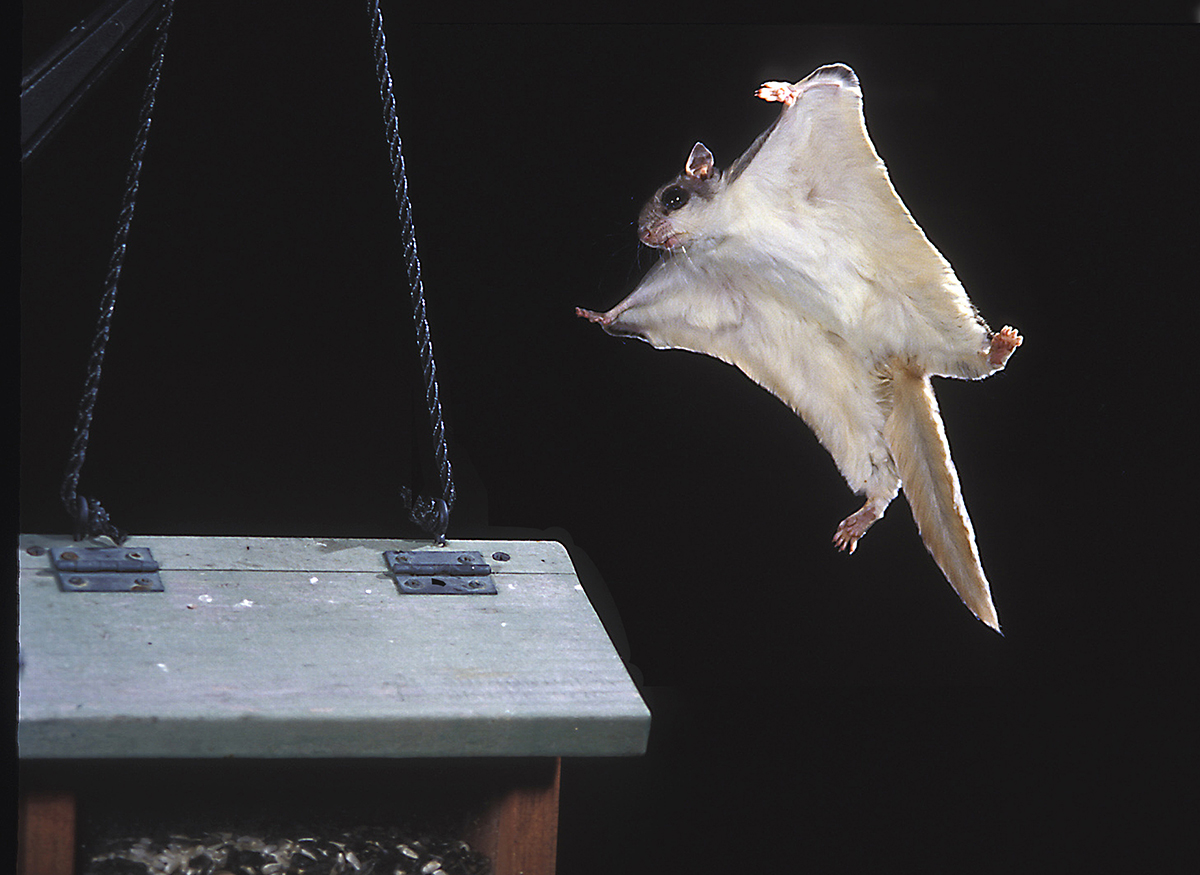
When you think of squirrels in Ohio, likely the first images to pop into your head are that of gray squirrels running through your yard, fox squirrels jumping through an open understory, or even maybe the loud chatter of red squirrels within a conifer stand. These three species – the so-called tree squirrels – make up only three of our seven species of squirrel in Ohio. Our squirrels, members of the family Sciuridae in the order Rodentia, are spread out across six genera and include lesser-known species of squirrels, like the southern flying squirrel and thirteen-lined ground squirrels. Additionally, we are home to two species that one may not realize are squirrels: eastern chipmunks and groundhogs.
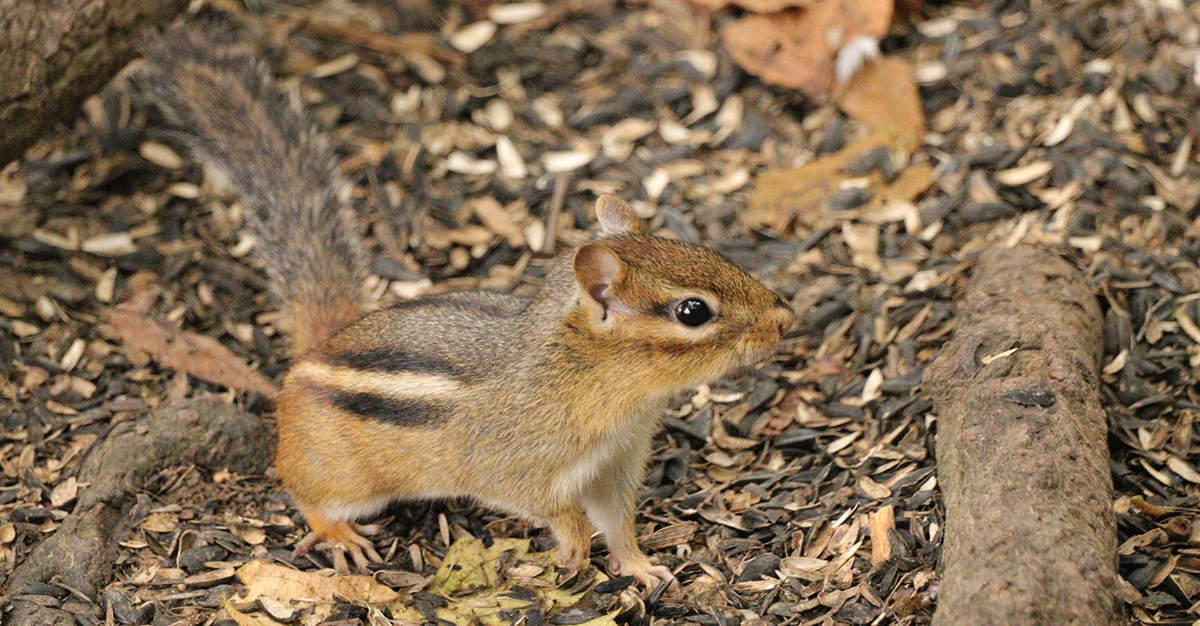
Ohio squirrels are unique, remarkable animals that are often easy to overlook due to their relative abundance, but in actuality, they demonstrate phenomenal examples of adaptation to thrive in their environment. Groundhogs are the only true hibernators in the state, thirteen-lined ground squirrels are very streamlined — perfect for dashing through open fields and into tunnels — and flying squirrels have the ability to take to the air and glide from tree to tree.
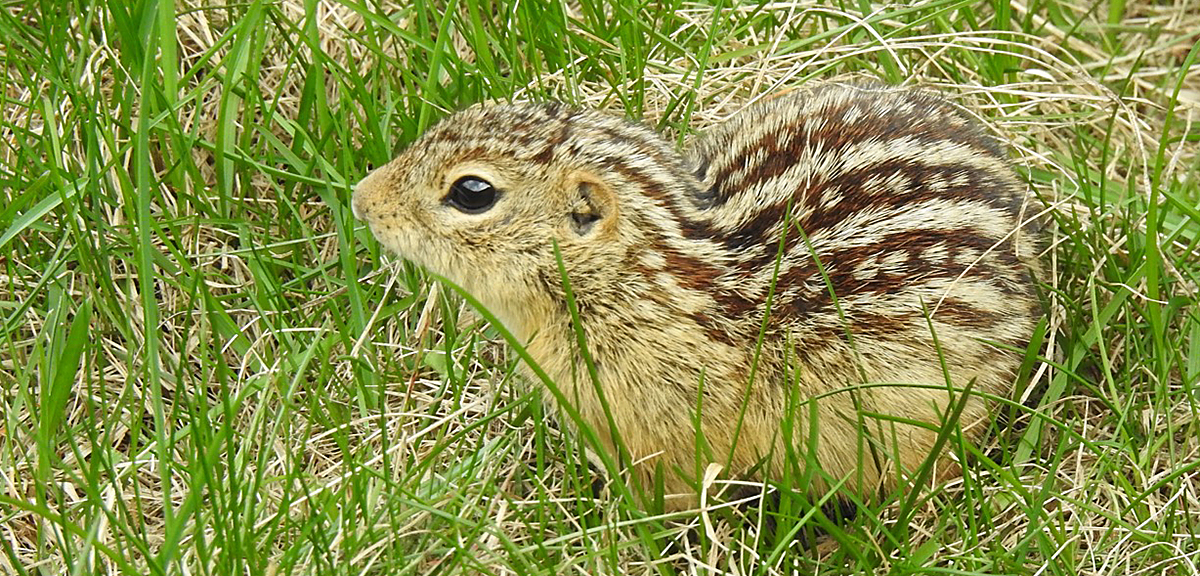
Flying squirrels are arguably the most fascinating and uniquely adapted of all their other squirrely cousins, with their characteristic skin membranes serving as a parachute of sorts. Known as the patagium (plural patagia), this flap of skin connects at the wrist and ankle allowing them to efficiently move through the air. Consequently, this makes them a little more awkward on the ground. Of course, the common name of these animals is a bit of a misnomer seeing as they are not capable of true self-powered flight. Bats are the only mammals which are truly able to fly. Flying squirrels are gliders, relying on gravity, wind and their patagia to keep them moving in the air. These acrobatic rodents are subclassified into the tribe Pteromyini, and consist of around 50 species worldwide, mostly concentrated in Asia. Some of these squirrels can get up to colossal proportions (for squirrel standards), such as the red giant flying squirrel of southeastern Asia, which can weigh more than 7 pounds. Here in North America, however, we host only three species of flying squirrels within the genus Glaucomys. These New World flying squirrels are the northern flying squirrel, Humboldt’s flying squirrel, and our Ohio resident, the southern flying squirrel.
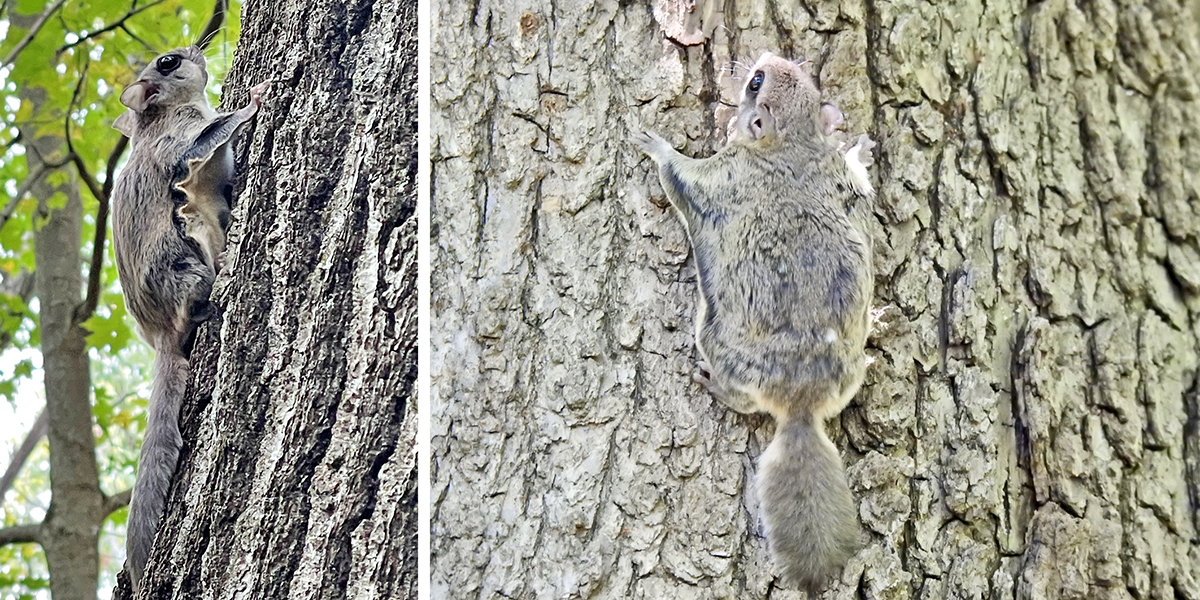
Southern flying squirrels are probably the most populous species of squirrel in Ohio. This often takes people by surprise, as I have had plenty of encounters with visitors responding with “Wow I had no clue we had flying squirrels!” or “Why have I never seen one?” The answer to the latter is simple, our flying squirrels are almost strictly nocturnal. They are built for this lifestyle in the dark, with their big, dark, buggy eyes aiding them in navigating the forest after nightfall.
These squirrels are certainly maneuverable in the air. With the aid of their patagium and flattened feather-like tail, which acts as a rudder, these squirrels can make quick turns while airborne. The feather-like tail also aids in landing. When the squirrel is nearing a landing pad, it will raise that flattened tail, which in turn forces the back half of the squirrel down to land feet first. There are other gliding mammals such as the colugos in the order Dermoptera, and marsupial gliders in the genus Petaurus. Neither of these groups are closely related to squirrels, but rather, an example of convergent evolution — adaptations independently evolve to fill the same niche — in this case the niche of gliding mammals.
An additional way that the southern flying squirrel stands out from our other squirrel species in the state is its diet. Flying squirrels are often called the most carnivorous of our squirrels, and for good reason. They will readily take insects, birds, nestlings, eggs, carrion, and even occasionally other small rodents. However, they will still consume food that is commonly associated with squirrels, such as nuts, berries, fruits, and seeds, and may also take them from your bird feeder. It is not super uncommon to find these squirrels feasting on the seeds in your feeder well into the night. Flying squirrels appear to especially have an affinity for hickory nuts, and will also cache nuts in the fall. These caches are done by scatter hoarding, which is when caches are spread out across the landscape rather than being concentrated in one place.
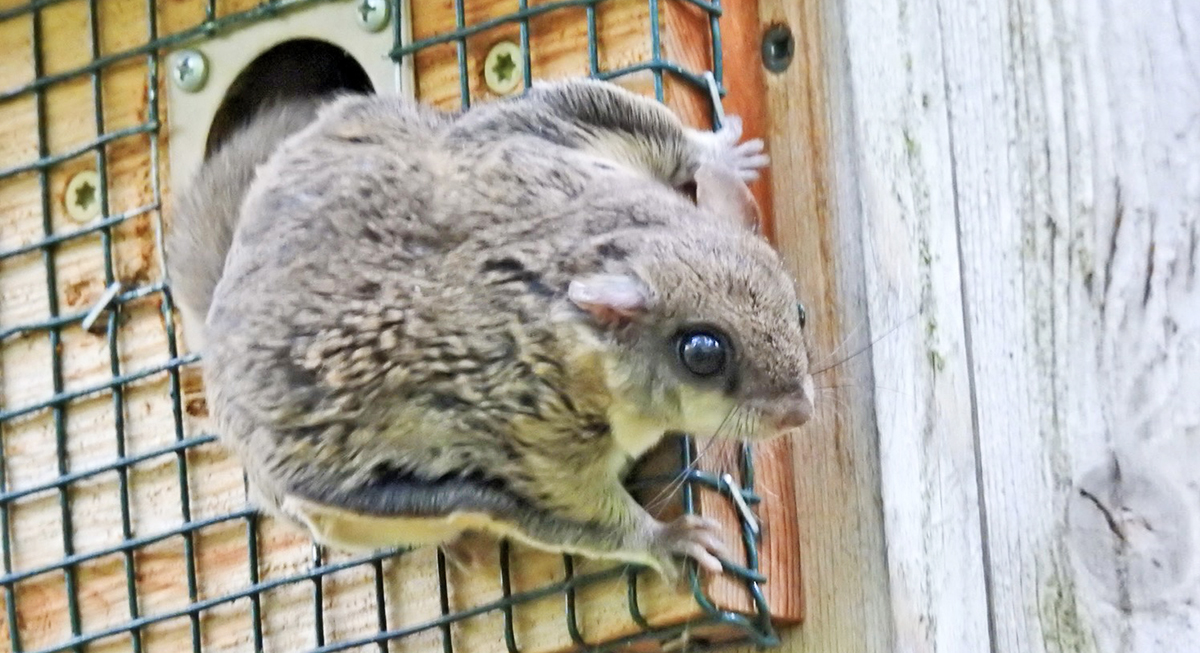
Spotting flying squirrels can be tricky because of their nocturnal nature. The aforementioned bird feeder technique can be effective, but they do also vocalize. Vocalizations are high-pitched buzzes and chirps, and almost sound like a slightly lower-pitched golden-crowned kinglet call (if kinglets called at night) with a mix of red squirrel chatter. Indirect signs of squirrels can be found in various forms, such as caches, but also scat, which are small, brown, oval shaped pellets. Flying squirrels also chew nuts in a unique way, making them easy to identify as squirrel signs. They are much neater than their squirrely cousins when chewing, and this results in the nut having a very circular bevel-like cut where they extracted the nut’s “meat.” Furthermore, look for a notch at the anterior end of the nut that the squirrel would have used to carry the nut, perhaps to a safer feeding location. It can be hard to use your paws to carry things while in the air. If you’re lucky enough to find a skull, you can also distinguish it from other typical squirrel skulls by the upturned nasal bone on a flying squirrel skull, while other sciurids typically continue with the curved shape.

References:
Elbroch, M. (2006). Animal skulls: A guide to North American species. Stackpole Books.
Elbroch, M., & McFarland, C. (2019). Mammal Tracks & Sign: A Guide to North American species. Stackpole Books.
Harder, J. D., Cameron, G. N. (2022). Mammals of Ohio. Ohio University Press.
SQUIRREL PROGRAMS
If you are interested in learning more about squirrels, here is a link with details of two upcoming programs, which includes a Flying Squirrel Talk & Hike program at Highbanks on Sunday January 21, from 2-4pm, and a Squirrel Studies program at Blacklick Woods on Saturday February 17, from 1-2pm.

Very informative article. I lived in Alabama for 21 years and once came across a flying squirrel in my backyard shed. I did not know they were nocturnal and that they were present in Ohio. I was fortunate to have come across that one in my shed.
While lying on an outdoor recliner near a silver maple tree one afternoon in my backyard, I looked up to see a squirrel “fly” off a limb and land on my chest. It just leaped off immediately .The impact on my chest was not very much but the surprise was great. The squirrel was probably freaked out as well.
Oh wow!!! Definitely an attention-getter.
Great educational information on Ohio flying squirrels!
Good job Ayden!!! You’re awesome!
Thank you for this article. We have lived in our home 24 years and not until this year
were made aware of some resident flying squirrels. We have a light in our front yard to watch the neighbor opossums that come and clean up the bird feed from our daytime feeders. Now we have seen at least 2 of the squirrels together running up and down the tree. It is so exciting. I am glad they are in the area
Will there be any more programs? I have always wanted to see a flying squirrel. I didn’t see this article until both programs were over.
Hello Susan, there are no other programs about flying squirrels in the current schedule of naturalist programs. You can check periodically from our website by using the menu Plan Your Visit/Program Search.